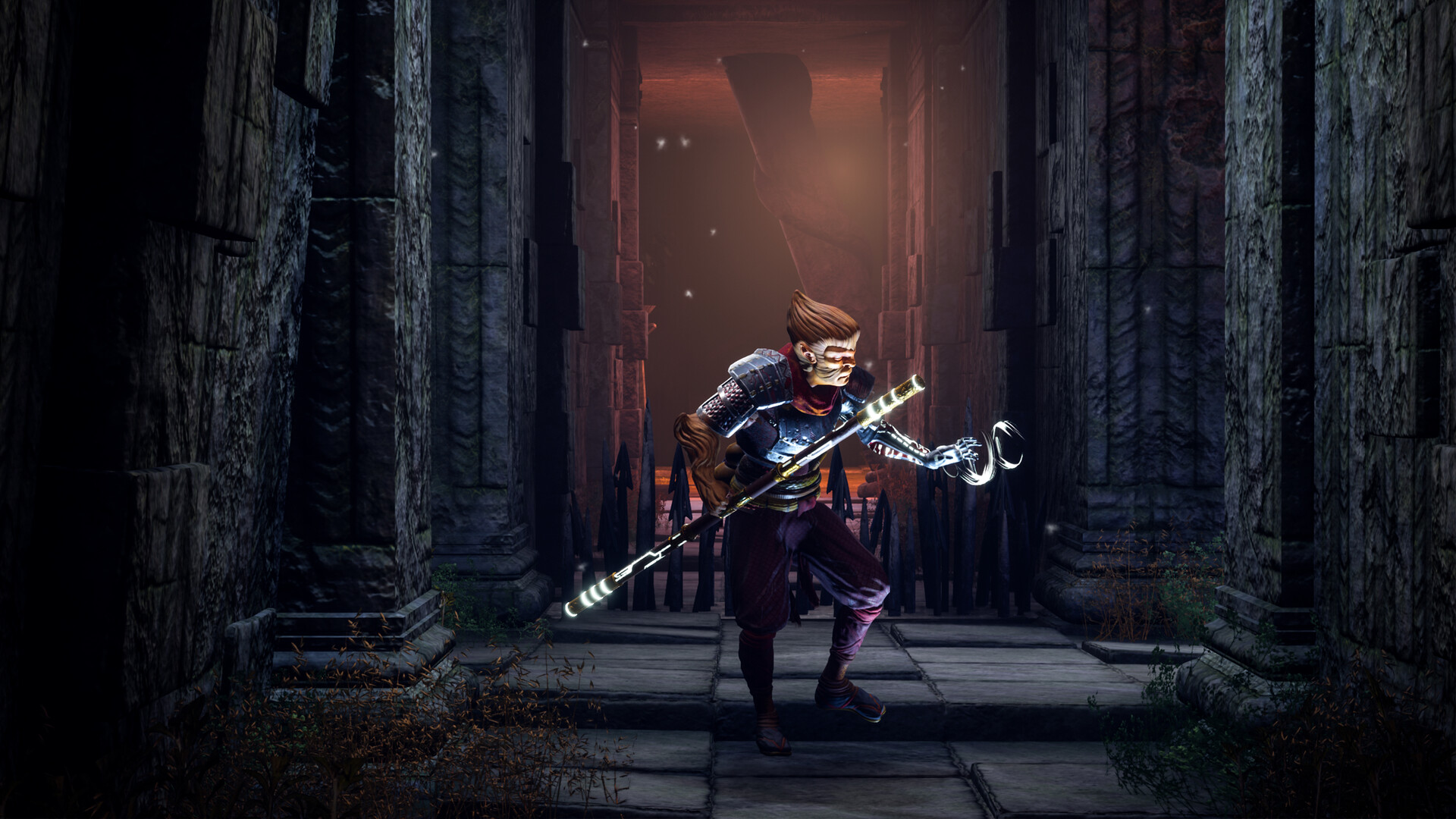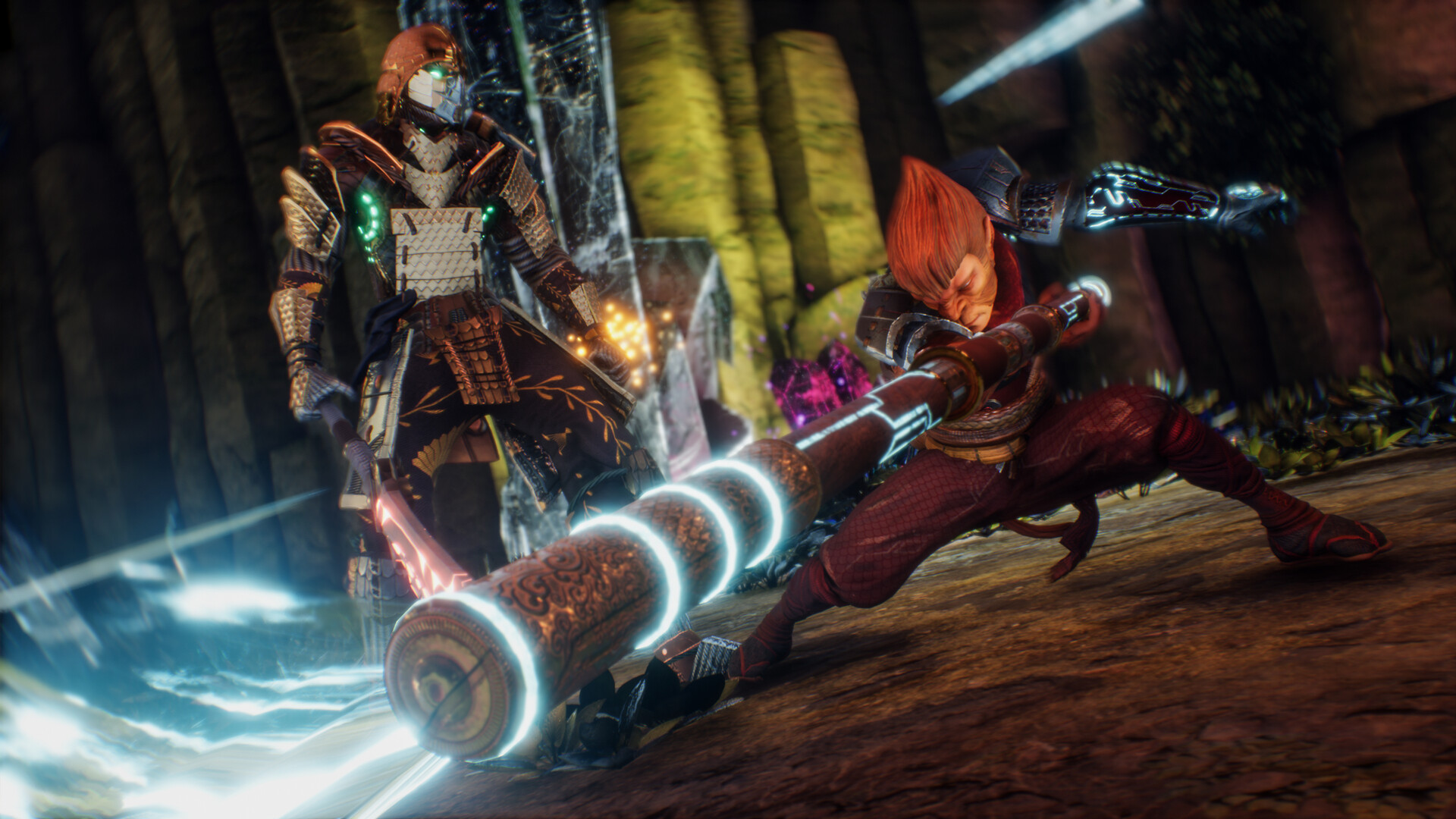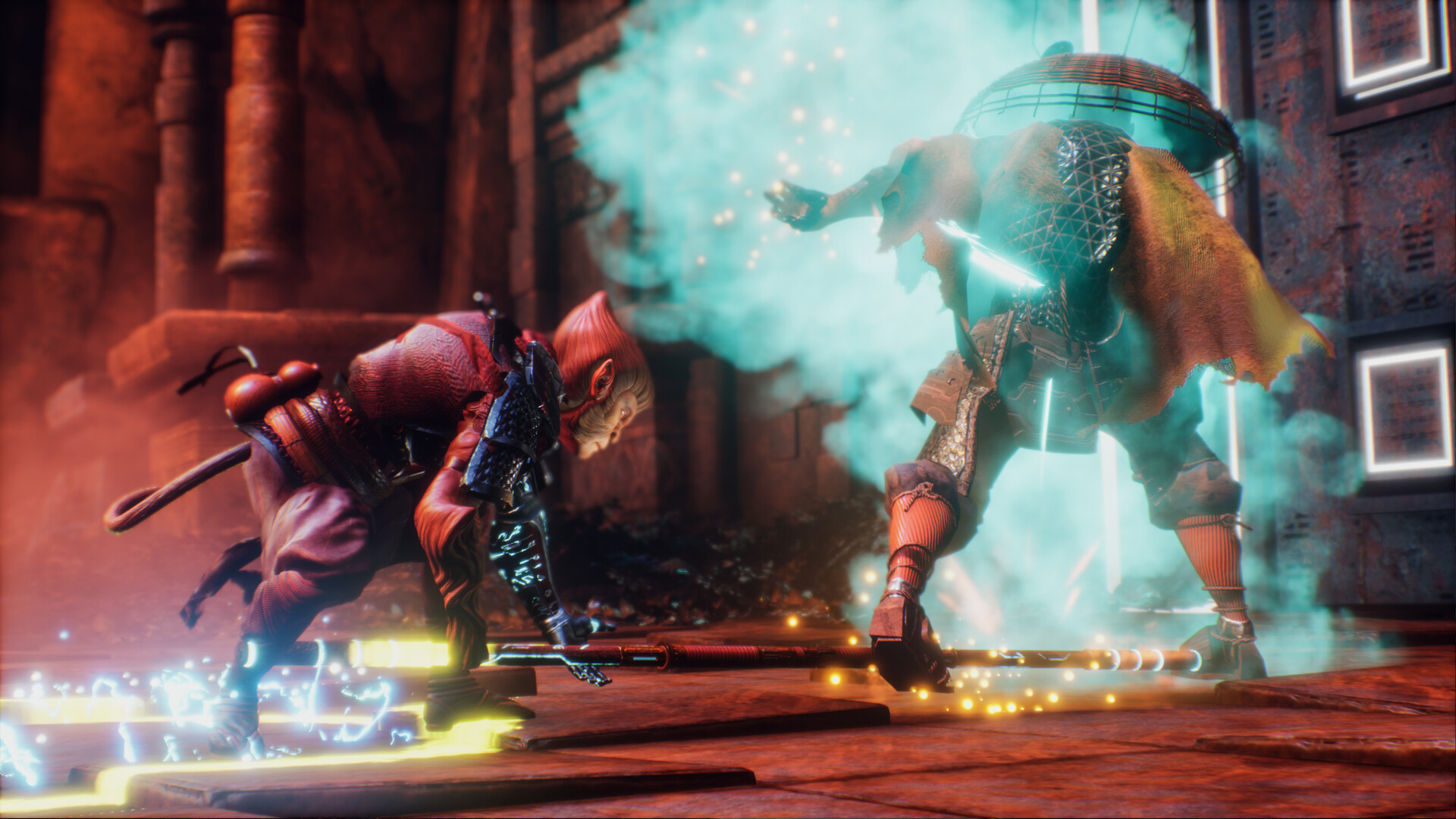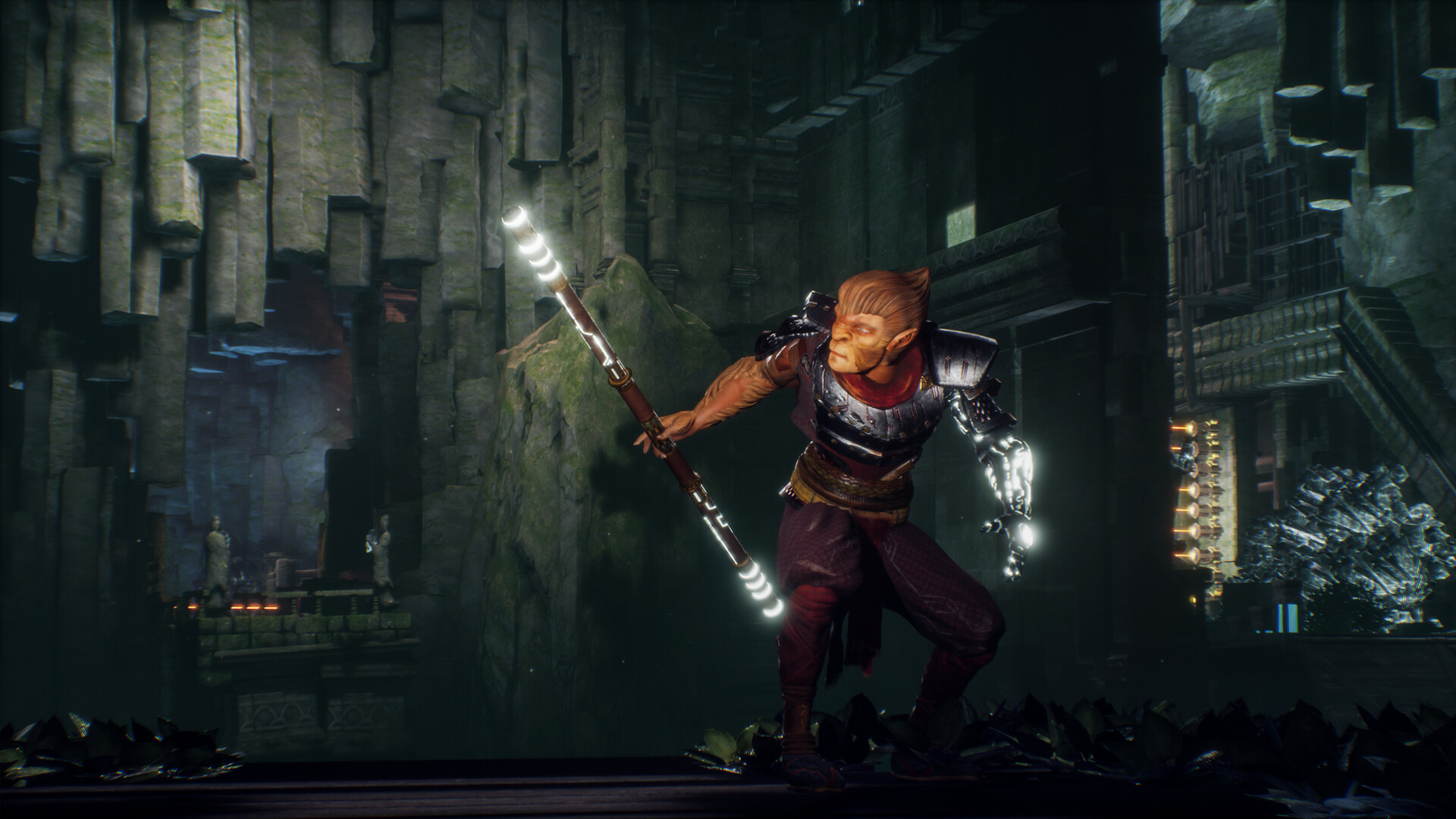Journey to the West has inspired countless stories across all entertainment media over the years, and with the upcoming The Crown of Wu, developer Red Mountain Studio is looking to put its own twist on the timeless tale. Set in the a world where fantasy and science fiction join hands, The Crown of Wu is promising kinetic, parkour-based traversal and combat and puzzles inspired by games like God of War, The Legend of Zelda, more. The elements are certainly in place to deliver an intriguing adventure, and to learn more about what will make it tick, we recently reached out to its developers with some of our questions. Below, you can read our interview with Red Mountain Studio CEO Jose Carlos Montero below.
“The environmental narrative is critical, we try to make the player understand the world in which they move and we tell a story through the environment.”
With The Crown of Wu’s story taking inspiration from Journey to the West, can you tell us about what makes its take on this famous story unique?
In our game we have given a twist to the original story, creating a new world where technology and religion are one and the same. Moreover, our Sun Wukong is not the affable and funny character of the rest of the stories related to Journey to the West, but he has been a criminal and now he is trying to redeem himself. The story does not start with a criminal Wu but his heart is corrupted by power and then he tries to redeem his sins and faults.
How much of an emphasis does the game put on storytelling and world-building in general?
The environmental narrative is critical, we try to make the player understand the world in which they move and we tell a story through the environment. For example, the game begins in a floating prison, half a kilometer high, where it is very difficult to escape (theoretically). In this prison, with a little observation, you see all the elements that make it visually look like a prison, obviously adapted to the time and the world where the events take place. The rest of the story is told through the collectibles, chests and objects that Wu finds on his way, so that each of them gives us a piece of the history of this new and curious world that we have shaped.
It looks like elemental attacks will be a core component of The Crown of Wu’s combat. What more can you tell us about how that system will function, and how much variety it will bring to the combat?
Yes, we have 4 elemental powers that participate both in combat and in the interaction with the environment. These elemental powers are Air (air blows), Lightning (lightning throw), Fire (fire spear) and Earth (earth blocks). The way we use them will be to stun enemies or directly damage them (depending on the power we use it will be impossible to damage them, for example, using the wind blow is unlikely to damage the robots, but using lightning if we subtract energy). The power of the earth is purely defensive and we will not be able to dominate it until the last stages of the trip.
On the other hand, these powers will also allow us to interact with elements of the environment to solve puzzles, for example.
What can you tell us about The Crown of Wu’s progression mechanics and how the gameplay will evolve as players get further into the experience?
The progression of the character is focused on unlocking the elemental powers, for which we have to eliminate the guardians who retain the gems that give us back the lost power. Initially we have no active power and as we progress through the levels, we will be able to recover one by one the ability to launch wind blows, electric and fire rays and finally earth blocks that also allow us to reach high areas by climbing these earth mounds.
“We have taken many references from Breath of the Wild, God of War and other similar games.”
Will the parkour-based traversal be a central part of the game? How much of the experience will see players contending with platforming challenges?
The platforming is an important part of the experience, since we will find originally insurmountable barriers if we don’t use our jumping skills. In addition, at times it will be a challenge that will test the player’s observation skills and timing, with hurried jumps and agile response times if we want to succeed through the levels.
What can you tell us about the game’s puzzles and how you’ve approached designing them?
The puzzles, in order to be solved, involve the observation of the environment and the use of elemental powers most of the time. In order to solve the vast majority of them, you have to trigger devices using your powers which will activate timers and force you to measure your steps going forward. We have taken many references from Breath of the Wild, God of War and other similar games to design them and we have adapted the level of difficulty so that they are not obvious, but not impossible to solve.
What has been your approach to level design for The Crown of Wu? Should players expect a focused and linear experience? How much will the game focus on exploration?
We will find two types of levels. Initially the levels are more linear, although the world invites the player to explore the path that marks the route to follow. There is a point in the game where you will find an open level that you can explore the way you prefer. From there, you will find more open world that allows free exploration. Consequently, the exploration experience gains weight and is fundamental to solve puzzles. In addition, the exploration experience gains weight and is fundamental to solve puzzles. In addition, in lots of hidden corners you will find objects with very important information to understand the game world, so people who enjoy exploring will have a great time looking for all these hidden treasures and collectibles that are scattered throughout the levels.
Roughly how long will an average playthrough of the game be?
The games last approximately 8 hours, although as we said before, it will depend a lot on your skill and your wit, and often it will also have to do with the time you spend investigating the environments and exploring all the areas.
Since the reveal of the PS5 and Xbox Series’ specs, a lot of comparisons have been made between the GPU speeds of the two consoles, with the PS5 at 10.28 TFLOPS and the Xbox Series X at 12 TFLOPS. How much of an impact on development do you think that difference will have?
Yes, it’s true that there are areas where the GPU power of the Xbox Series X with its 12 TFLOPS is more evident, but in our case it hasn’t affected much in the development. The native versions of The Crown of Wu have been Steam and PS5, moving from the PS5 version to Xbox Series X is noticeable in the stability of frames that players will surely appreciate.
“The games last approximately 8 hours, although as we said before, it will depend a lot on your skill and your wit, and often it will also have to do with the time you spend investigating the environments and exploring all the areas.”
The PS5 features an incredibly fast SSD with 5.5GB/s raw bandwidth. How can developers take advantage of this, and how does this compare to the Xbox Series X’s 2.4GB/s raw bandwidth?
PS5 load times and its management with the SSD is incredible. What used to be minutes on PS4 have become seconds, it helps a lot in improving the experience and not breaking the immersion every time the player dies or changes zones. It also helps us developers in not having to do too much effort with level streaming systems to lighten the level load as with PS4/Xbox One.
Regarding the difference with Xbox Series X, it’s also not very noticeable. Maybe the difference is between 5 and 7 seconds more on loading screens compared to the PS5 version.
The Xbox Series S features lesser hardware compared to Xbox Series and Microsoft is pushing it as a 1440p/60 FPS console. Do you think it will be able to hold up for the more graphically intensive games as this generation progresses?
It’s going to be hard to hold 1440p/60fps for the most demanding games of the generation. As much as Xbox wants to sell it this way I don’t think the average consumer will want to buy a Series S and establish it as their console for the whole generation. Personally I see it more as a support console, for example in our case at home we have a PS5 and a Series S that makes us support to play Xbox exclusive games or just to enjoy the wonderful Game Pass system. If we want to enjoy more resolution/quality we play on PS5 or PC directly.
Super Resolution is coming to PS5 and Xbox Series X/S. How do you think this will help game developers?
It helps developers to improve the framerate margin without any doubt. In our case, there are more exigent areas of the game where drawcalls appear and with the super resolution we could achieve greater stability.
Although it is true that in many cases it still gives problems due to incompatibility between screen model, console resolution and game resolution. It would be necessary to find a simpler way to establish this super resolution and that would give more solutions to the problems it has.
What frame rate and resolution will the game target on the PS5 and Xbox Series X/S?
At the moment on PS5 it will be playable at 1080p/60 fps but we are working on incorporating an update on launch day with 4K and 30 fps for players to choose from. With 4K we have seen a very significant graphical leap and we want players to experience that as well.
On Xbox X Series it will be the same configuration as PS5 but on the Series S it will be something hybrid, with 1080p/60fps and 1440p/30fps.
“Specific optimization has been done for Steam Deck.”
What are your thoughts on the Steam Deck? Do you have plans for any specific optimizations for the device?
Yes, specific optimization has been done for Steam Deck. For example, all The Crown of Wu videos had to be re-rendered with a new codec to work properly on this device. There are also resolution settings and graphics settings that are common with respect to the Steam version that work correctly on Steam Deck as well.
The Crown of Wu Interview – Story, Combat, Parkour, and More
Source: News Beginning





0 Comments